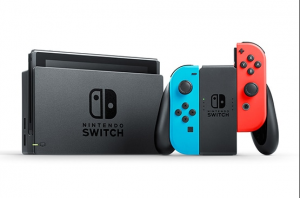This past week Microsoft revealed more details on the Xbox Scorpio; Microsoft’s response to the PS4 Pro. Both systems are being branded as upgrades and represent a major shift in the console market strategy for us to look at.
The Console Market:
The specifics of designing and manufacturing a console are beyond the scope of my knowledge base, but we can certainly discuss their impact. Making a console is not a decision that is taken lightly. The investment required is easily one of the most expensive parts of the industry. Not only that, but you are essentially locking your potential market for several years at least.
With the royalty rates on games, a console maker can see huge profits. With that said, when a console fails, that can usually spell doom for the platform and company. Over the years, we have seen Microsoft and Sony try to keep pace with each other with their respective platforms; while Nintendo has done their own thing.
For each new platform, both companies essentially have to start back at 0 with creating their markets and getting developers on board. In Nintendo’s case, they have had a lot of trouble with getting exclusives from third parties.
The challenge of a new platform is that it can create a positive or negative feedback loop depending on the consumer response. If the console does well, more developers will want to work on it and increase the library. If a console doesn’t come out strong, it can be very difficult to convince developers to support it.
And these reasons are why it’s very fascinating to look at Microsoft and Sony’s plans for the near future.
Upgrades:
As we’ve talked about, the PS4 Pro and Xbox Scorpio are not “new” systems, but upgrades. Both companies have been billing them as similar to the upgrading you do on a computer. They will support games on the original consoles, but will of course look a little better.
The idea from Sony with the PS4 Pro was to position it as a luxury item; with the major point being 4K TV support. The same goes with the Scorpio; with Microsoft saying that it’s the most powerful console on the market.
The point is that this will be the first time that there will not be a requirement to buy a new console in order to keep playing Playstation or Xbox games. In a sense, we are seeing an extended console life-cycle for the two.
And that takes us to Nintendo and how they could be in a really good position.
The Underdog:
Nintendo has been having trouble lighting up the market over the years. While they’ve had massive successes with their games, their platforms have just been undersold compared to the other two. With the other platforms going for the upgrade option, the Nintendo Switch right now is the only “new” console on the market for the foreseeable future.
I’ve talked about before my thoughts on Nintendo’s strategy, but here’s a quick recap. Nintendo is not going to have a #1 console in this market. They simply don’t have the market share and a big enough library to do it. However, if they can position themselves as #2 behind either Sony or Microsoft, they can still have a good portion of the market share.
With the PS4 Pro and Xbox Scorpio simply being upgrades, this does put Nintendo in an interesting spot. If they can capitalize on being brand new with unique games, it could be possible for them to gain renewed interest from the general consumers.
Trading Up?
The decision to focus on upgrades instead of new platforms is a big deal from Sony and Microsoft. Not only does this allow them to keep their respective markets, but it also delays the push to the next console cycle.
We’ve been talking about the eventuality of reaching a point where there is a limit of hardware growth. Whether or not we’re hitting it now is another story, but there is a lot more to look at if this becomes popular.
Before we end this piece for now, here are a few questions I’m thinking about, and I’m curious what you folks think about them.
- If we see a focus on upgrades instead of new hardware, what will this mean for developers wanting to focus on a weaker or stronger model?
- How many models could actually exist in the market at the same time?
- How far could this push back the next console cycle?
- Are we only looking at upgrades, or will there be side-grade options over time?




